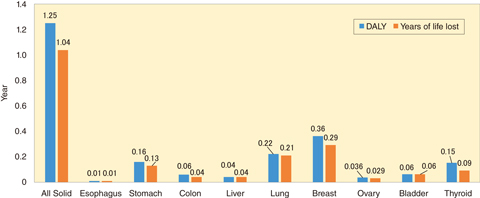
Fig.2-10 Evaluation of DALY due to radiation exposure

Fig.2-11 Evaluation results of DALY and years of life lost by solid cancer in Japanese females owing to radiation exposure
In Level-3 probabilistic risk assessment (Level-3 PRA), the risk indices of public health for severe accidents at nuclear power plant include cancer mortality, morbidity rates, and loss of life expectancy. However, these risk indices may underestimate the health risk to the public owing to radiation exposure because they do not consider the loss of health due to diseases. In contrast, in the field of public health, disability-adjusted life years (DALY), which are calculated as the sum of loss of life expectancy and years lived with disability, is used as a risk index for chemical materials and so on. DALY can compare various health risks to consider fatal and non-fatal diseases. Therefore, we have developed a health-risk-evaluation method for radiation exposure using DALY as a risk index.
Fig.2-10 shows the evaluation of radiation-exposure risk in terms of DALY. First, loss of life expectancies from cancer mortality due to radiation exposure are calculated. Second, years lived with disability are calculated to consider decreased quality of life from cancer morbidity. Finally, DALY values are calculated by summing loss of life expectancy and years lived with disability.
Fig.2-11 shows the DALY values and losses in life expectancy due to each type of solid cancer in Japanese females following a single exposure of 1000 mGy. The DALY values for all solid cancers were about 16% larger than the loss of life expectancy. Therefore, we can quantitatively evaluate the health risk due to radiation exposure considering decreased quality of life. Furthermore, we calculated the DALY values for all incidences of solid cancer spontaneously for the Japanese population in comparison with other health risks. The DALY values for all solid cancer incidences spontaneously were 4.26 years for males and 3.41 years for females. In contrast, the DALY values of all solid cancers due to 1000 mGy of radiation exposure were 0.73 years for males and 1.25 years for females. In other words, the health risk increased by approximately 17% (from 4.26 years to 4.99 years) for males and by approximately 37% (from 3.41 years to 4.66 years) for females as compared with normal life.
In summary, we performed a detailed health-risk assessment for radiation exposure to the public during nuclear-power-plant accidents. In the future, we will estimate the health risk to the public arising from hypothetical accident scenarios at nuclear power plants using level-3 PRA and examine the safety goals of nuclear power plants based on the risk information.